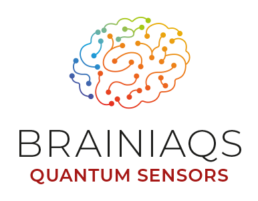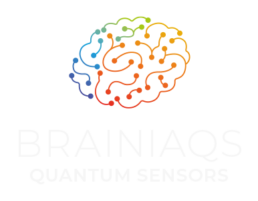EIC supports BRAINIAQS: Brain imaging with arrays of quantum sensors
The newly signed Pathfinder project called BRAINIAQS promises huge breakthrough for biological imaging experiments. It will develop state-of-the-art technology using quantum sensing.
Quantum sensing technology is one of many practical applications of emerging technologies based on principles of quantum physics (for more information about the potential of these technologies see e.g. the Quantum Manifesto, signed at the 2016 Quantum Europe Conference).
The purpose of the BRAINIAQS project is to set quantum sensing technology in life sciences innovations, which continuously seek for new techniques of biological imaging allowing precise and non-invasive diagnostics. Currently, brain imaging is either based on very invasive procedures (surgical implantations, skin flaps, endoscopes) or histology, both of which have their limitations. Histology is sort of an endpoint method, which does not allow to track any dynamics in the organism. In addition, the invasive methods often lead to detrimental inflammatory responses that can interfere with biological processes under investigation.
As the research proposal states:
The goal of this project is to deploy quantum sensing technology in life sciences applications by developing and implementing arrays of quantum sensors, based on superconducting single-photon detectors, in a multi-photon microscope to greatly enhance imaging depth and resolution in live tissues.
This can be particularly useful for mammalian neuroscience. The new approach can help to improve clinical diagnostics tools based on optical methods – and more sensitive diagnostic tools can lead to better care at lower costs, benefiting society as a whole. But the outcomes of the BRAINIAQS project can be utilized also by other biological fields, e.g. in high precision time-Resolved Raman spectroscopy (an advanced single molecule fluorescence technique which provides detailed information about chemical structure and molecular interactions).
The project, which starts in October 2020, will include academic and research entities from Finland, Germany, Netherlands and Sweden. The coordinating organization is Single Quantum – a company created in 2012 as a spin-off from Kavli Institute of Nanoscience at the Delft University of Technology. Single Quantum was awarded the prestigious SME instrument phase 2 grant from the European Commission to supporting disruptive innovation in small businesses with significant growth potential and global ambitions. Single Quantum is also participating in the Quantum Flagship initiative. The other members of the consortium are Swedish Royal Institute of Technology (Kungliga Tekniska Högskolan, KTH), Technical Research Centrum of Finland (VTT Teknologian tutkimuskeskus) and European Molecular Biology Laboratory (EMBL) in Germany.
The project coordinator and CEO of Single Quantum, Dr. Sander Dorenbos, adds:
Enlarging the active area of our single-photon detectors and integrating them in a (two-photon) microscope is a long-term wish of Single Quantum. We believe this will make a large impact, since the new microscope will reveal biological processes deeper in the (human) body at an unprecedented resolution.
BRAINIAQS was chosen in the Transition to Innovation EIC Pathfinder call. The project builds on technology developed in a successful Pathfinder (FET-Open) project called SUPERTWIN. SUPERTWIN aimed to develop the technology foundation for an advanced optical microscope based on principles of quantum optics. The result is a new generation of optical microscope systems allow imaging at a resolution beyond the Rayleigh limit (generally accepted criterion for the minimum resolvable detail), which is set by the photon wavelength.
▪ See the list of the projects that were chosen in the 2019 Pathfinder calls.
▪ See also the article about the ongoing Pathfinder (FET Proactive) calls for proposals.
Background information
FET-Open and FET Proactive are now part of the Enhanced European Innovation Council (EIC) Pilot (specifically the Pathfinder), the new home for deep-tech research and innovation in Horizon 2020, the EU funding programme for research and innovation.


